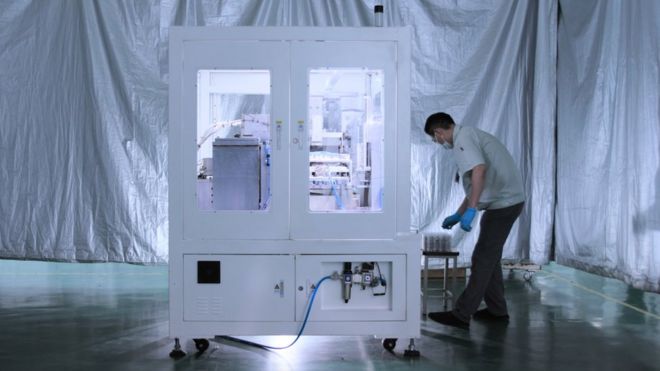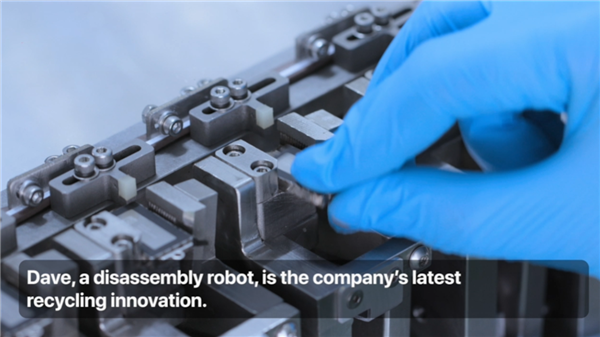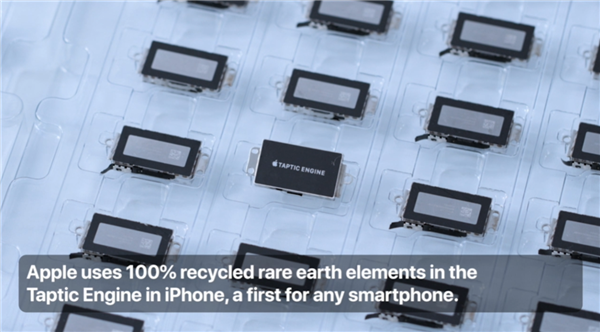Fan Cheng Apple has developed a new generation of iPhone disassembly robot Dave, which can bette
Published on:2020-07-22
Recently, Apple announced a plan. As part of the plan, Apple announced its latest recycling innovation technology, the latest iPhone disassembly and recycling robot Dave.

Apple plans to achieve carbon neutrality for the whole business, production supply chain and product life cycle by 2030. Apple has now achieved carbon neutrality in global corporate operations. The new commitment means that every apple device sold will not have any climate impact by 2030.
It is reported that the next 10 years will reduce emissions through a series of innovative actions, including low-carbon product design, continuous improvement of energy efficiency, use of renewable energy, process and material innovation, and carbon removal.

According to apple, Dave robot can disassemble the iPhones tactile engine, taptic engine, so as to better recycle core materials, such as rare earth magnets and tungsten. Of course, it can also recycle steel materials. Compared with another iPhone disassembly robot "Daisy", Dave is better in this regard.
Daisy is Apples second-generation disassembly robot. It is about 30 feet long and consists of five mechanical arms and conveyor belts. Different from the rough and direct crushing method, Daisy can disassemble and sort various components in more detail, and can disassemble up to 200 iPhones per hour. With its help, apple can recycle more valuable materials.
Apple also said that all iPhone, iPad, MAC and apple watch devices launched last year were made of recycled materials, including 100% of rare earth elements used in iPhone taptic engine, which is the first time in apple and any smartphone.
Through product design and recycling innovation, apple reduced its carbon footprint by 4.3 million tons in 2019. In the past 11 years, Apple has reduced the average energy used by its products by 73%.

Today, Apple has also received a commitment from more than 70 suppliers to use 100% renewable energy for Apples production equipment, which is equivalent to a commitment to provide nearly 8 gigawatts of power for its product manufacturing. Once completed, these commitments will avoid more than 14.3 million tons of carbon dioxide per year, equivalent to reducing more than 3 million cars on the road each year.

Apple plans to achieve carbon neutrality for the whole business, production supply chain and product life cycle by 2030. Apple has now achieved carbon neutrality in global corporate operations. The new commitment means that every apple device sold will not have any climate impact by 2030.
It is reported that the next 10 years will reduce emissions through a series of innovative actions, including low-carbon product design, continuous improvement of energy efficiency, use of renewable energy, process and material innovation, and carbon removal.

According to apple, Dave robot can disassemble the iPhones tactile engine, taptic engine, so as to better recycle core materials, such as rare earth magnets and tungsten. Of course, it can also recycle steel materials. Compared with another iPhone disassembly robot "Daisy", Dave is better in this regard.
Daisy is Apples second-generation disassembly robot. It is about 30 feet long and consists of five mechanical arms and conveyor belts. Different from the rough and direct crushing method, Daisy can disassemble and sort various components in more detail, and can disassemble up to 200 iPhones per hour. With its help, apple can recycle more valuable materials.
Apple also said that all iPhone, iPad, MAC and apple watch devices launched last year were made of recycled materials, including 100% of rare earth elements used in iPhone taptic engine, which is the first time in apple and any smartphone.
Through product design and recycling innovation, apple reduced its carbon footprint by 4.3 million tons in 2019. In the past 11 years, Apple has reduced the average energy used by its products by 73%.

Today, Apple has also received a commitment from more than 70 suppliers to use 100% renewable energy for Apples production equipment, which is equivalent to a commitment to provide nearly 8 gigawatts of power for its product manufacturing. Once completed, these commitments will avoid more than 14.3 million tons of carbon dioxide per year, equivalent to reducing more than 3 million cars on the road each year.

